The 30.001th Last Post
By Dirk De Paepe
1914-1918: World War 1 and the Ypres Salient
One hundred years ago the whole world was in the grip of the biggest and deadliest conflict in its history. From July 28, 1914 to November 11, 1918 the First World War claimed the lives of more than 16 million people. A total of approximately 70 million soldiers were deployed. More than 1.5 billion people lived in countries that were involved in the conflict. They made for more than 80% of the world population, that at that time amounted to approximately 1.8 billion. The Great War (as WW1 is often referred to) paved the way for major political changes in about all participating countries. As such, it included the end of the prewar German, Russian, Austro-Hungarian and Ottoman Empires.
One of the main war zones, The Western Front, was largely situated in Flanders, Belgium. From October 1914 to October 1918 the battlefield was located just a few kilometers from the center of the medieval city of Ypres. The trenches were situated from north to south in an arc around the city: the famous Ypres Salient. During the four-year war the ancient city in the heart of the Ypres Salient was literally razed to the ground, totally destroyed. From the beginning of May 1915, nobody lived anymore in Ypres. Early 1919, residents reluctantly turned back to their former grounds and little by little they started the rebuild of their city. Many buildings were even reconstructed identical to the plans of their medieval example. After the earlier destruction during the invasion of famous historical Belgian cities, such as Leuven (with the complete demolishing of the world-famous university library), the inhabitants of Ypres had collected many plans of their important medieval buildings. Thus, eg. the famous Belfry and the Cloth Halls could be restored in all their authentic glory.
Picture 1: The medieval Belfry and Cloth Halls are faithfully rebuilt to their original examples
In that famous Ypres Salient, no fewer than five bloody battles were fought. A few months after the enemy invasion of Belgium on August 4, 1914, the front stagnated, which resulted in the first battle of Ypres. On April 22, 1915, the Second Battle of Ypres began with the first major gas attack ever. The chlorine gas choked thousands of allied soldiers, mainly French troops and many North Africans. It was the first time in history that a weapon of mass destruction was being used. Later in the war, the Ypres Salient proved to be an experimental battlefield on several occasions: it is here that, in July 1915, flamethrowers were deployed for the first time. In July 1917 the terrifying mustard gas appeared, also appropriately called “Yprite”. And from July 31 to November 10, 1917 raged probably the most terrible battle of Ypres, in its final stage sometimes referred to as the “Battle of Passchendaele”. (Passchendaele is a village near Ypres.) It was a massacre unprecedented. The sense and nonsense of this offensive are still under discussion to this day.
In the trenches and in the no man’s land around Ypres, about half a million soldiers were killed in action between 1914 and 1918. In addition to Germans, French, British and Belgians also Moroccans, Algerians, Tunisians, Senegalese, Canadians, Australians, New Zealanders, South Africans , Chinese, Indians, Jamaicans and many other nationalities were included. But especially the troops of the British Empire yielded around Ypres a very large contribution to the resistance against the enemy invasion. As the victims were often horribly butchered, many bodies could not be identified. But also many of the survivors suffered serious irreversible injuries, with often amputations of limbs and even parts of the face as a result.
Picture 2: even 100 years later, all kinds of explosives are still found on a daily bases by farmers in Flanders Fields
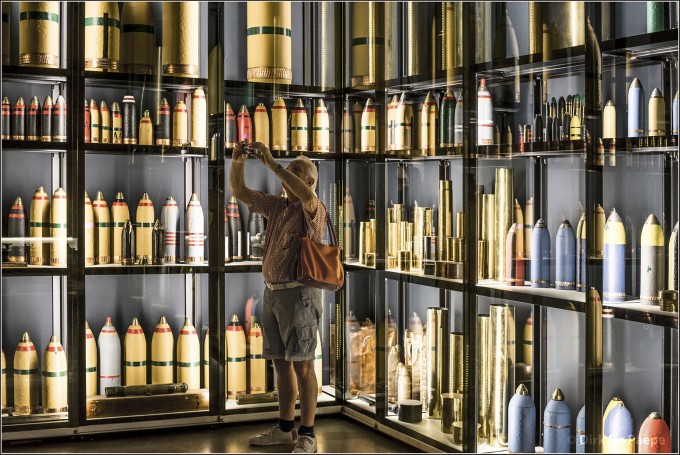
Picture 3: some of the trenches are maintained
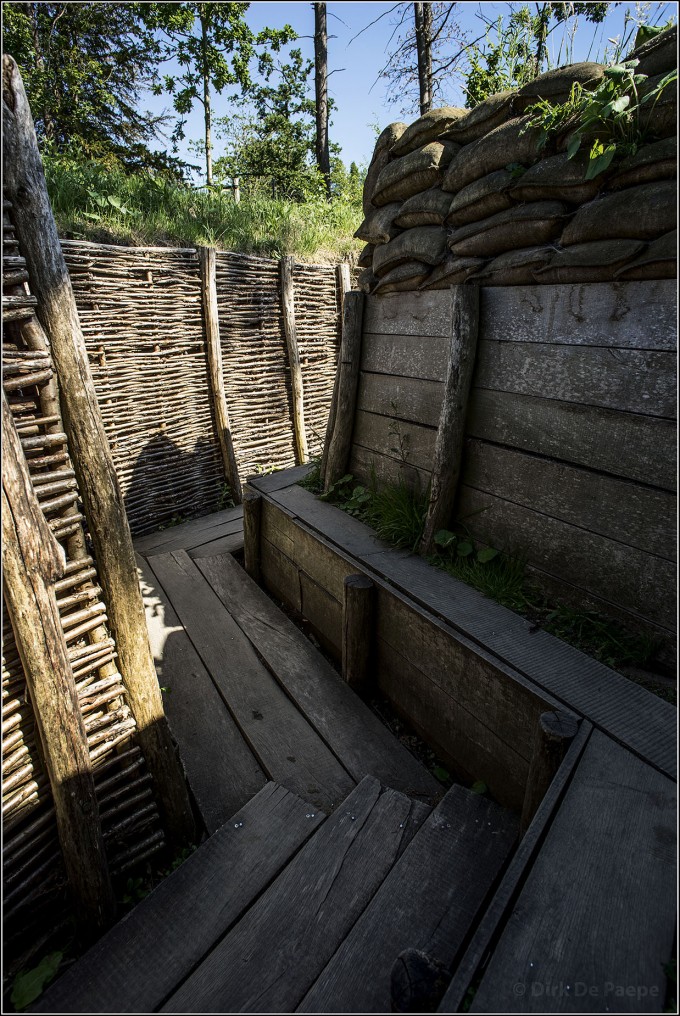
Picture 4: inside a shelter in the trenches
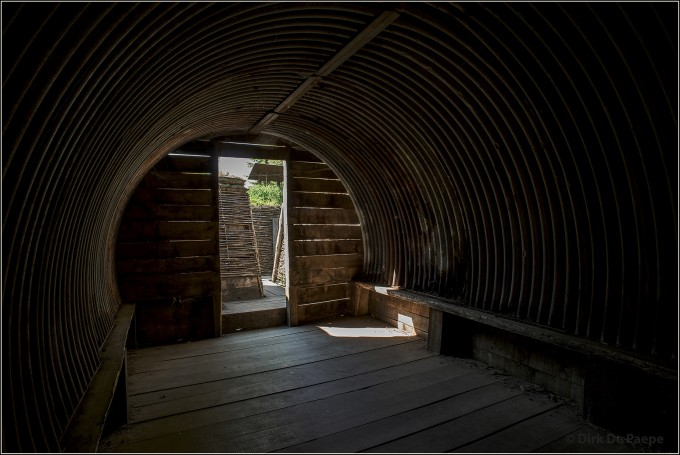
Picture 5: outside a shelter in the trenches
Tyne Cot and Menin Gate
In Passchendaele near Ypres lies the largest military cemetery of the Commonwealth War Graves Commission (CWGC): the “Tyne Cot Commonwealth War Graves Cemetery And Memorial To The Missing” is dedicated to the First World War dead of the British Empire, which fell in the Ypres Salient of Flanders Fields at the Western Front. Here also all missing soldiers and unidentified war dead are specially remembered and honored.
The land on which the cemetery is located, was voluntarily donated forever by the Belgian people to all those who are commemorated here. The names of the missing soldiers are engraved on the walls at the edge of the cemetery on the one hand, and on the other hand also on the walls of the Menin Gate in the city of Ypres, which was built by the British as a special memorial for their missing, even before the Tyne Cot Cemetery monument. In the Menin Gate, the names were engraved of 54.896 Commonwealth soldiers who died here, but whose bodies have never been identified or recovered. When it became clear that there was not enough space on the Menin Gate to engrave the names of all the missing soldiers, the arbitrary cutoff date of August 15, 1917 was chosen and the names of 34.984 more British missing after this date were inscribed on the walls of the Tyne Cot Memorial To The Missing. In total, therefore, 89.880 names of fallen soldiers are engraved. An incredible number, especially when you consider that this relates only to those soldiers of the British Empire who fell in the Ypres Salient and whose bodies have not been identified or not recovered.
Picture 6: Group arrival at theTyne Cot Cemetery
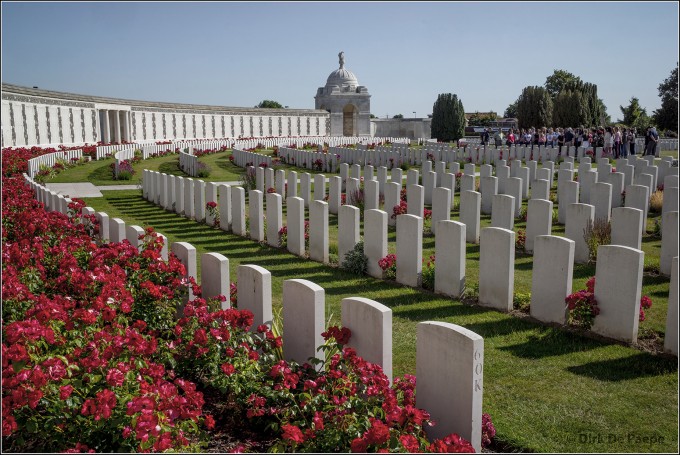
Picture 7: Grave of an unknown Australian soldier at Tyne Cot
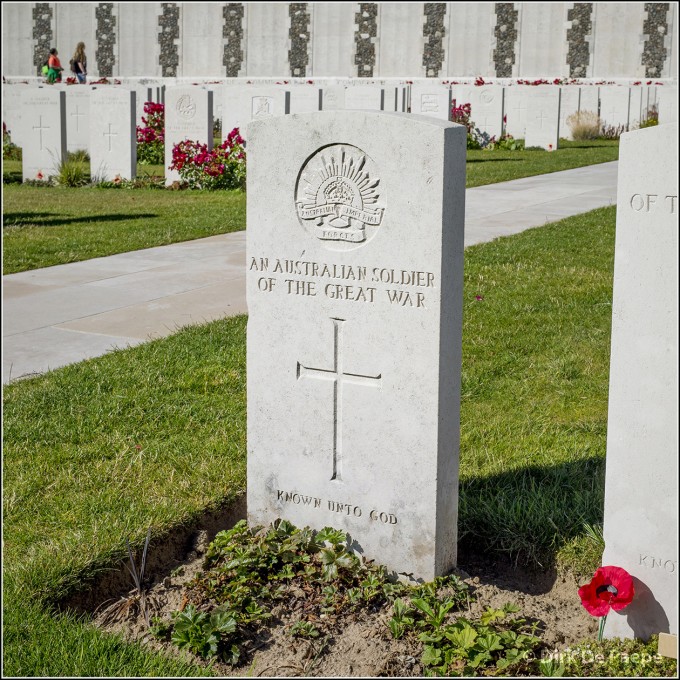
Picture 8: Locals at the Menin Gate
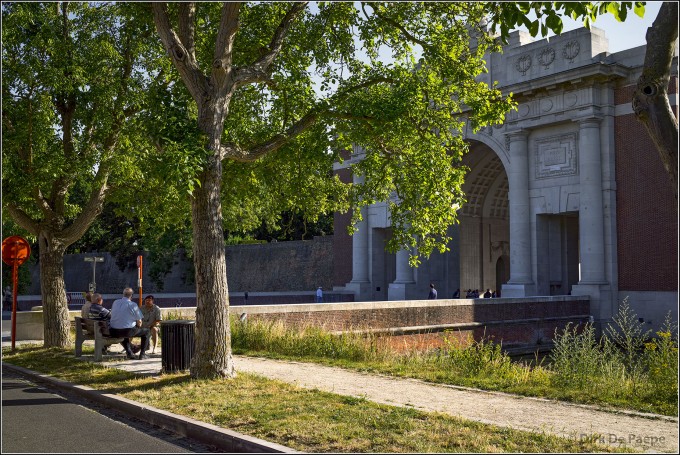
Picture 9: The Menin Gate Memorial monument
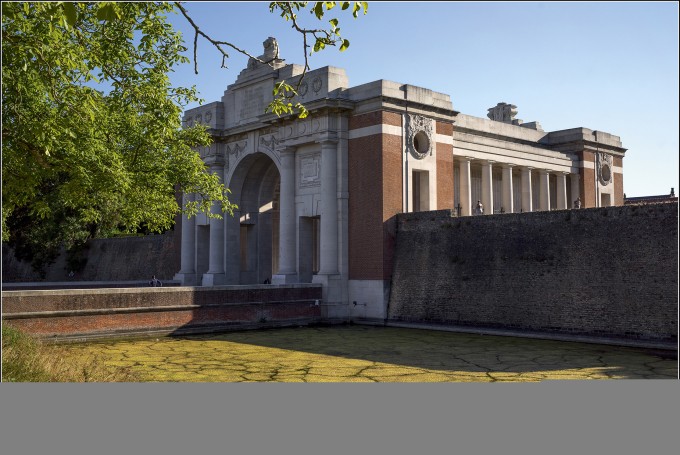
Picture 10: 54896 names engraved
Never forget
The First World War is still very present in those Flanders Fields, where still every day unexploded explosive devices are found by local farmers. One hundred years later!
The Menin Gate, Tyne Cot Cemetery, the town of Ypres and the entire surroundings are an area of remembrance – for the Flemish, but certainly for so many British, especially those who cherish the Menin Gate and Tyne Cot Cemetery as the only place where they can commemorate their missing family members of yore, relatives who never could get their own grave. Their name on a wall, among those of their fallen comrades, is the only thing left of them.
Every day, visitors arrive from all over the former British Empire, of course most coming from England, visiting the cemeteries and the Menin Gate. Often it concerns young people, along with their parents, to come looking for a name of a family member on the walls of Tyne Cot or Menin Gate and place a little wooden cross with a poppy, or who are making a school trip to learn about the importance of those commemoration symbols. Every visitor, without exception, is heavily struck by the symbolism of these historical sites.
Picture 11: Looking for a name.
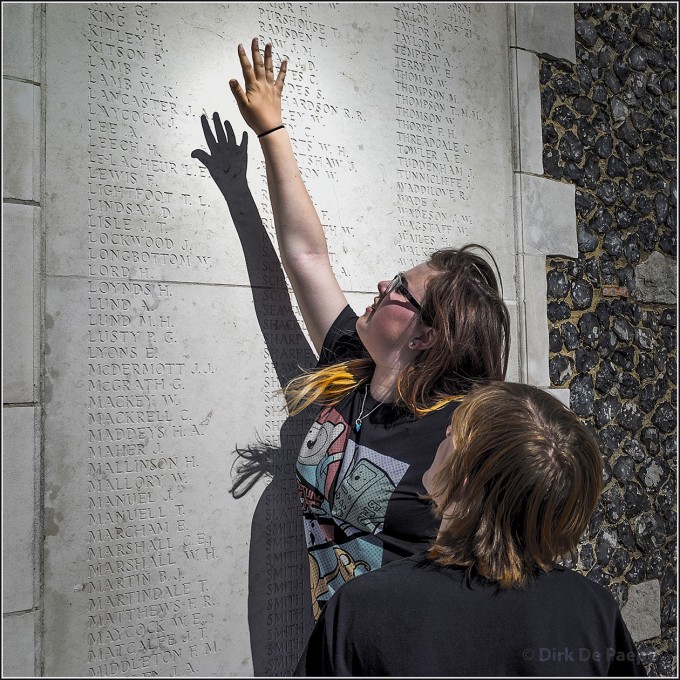
Picture 13: Body language speaks volumes
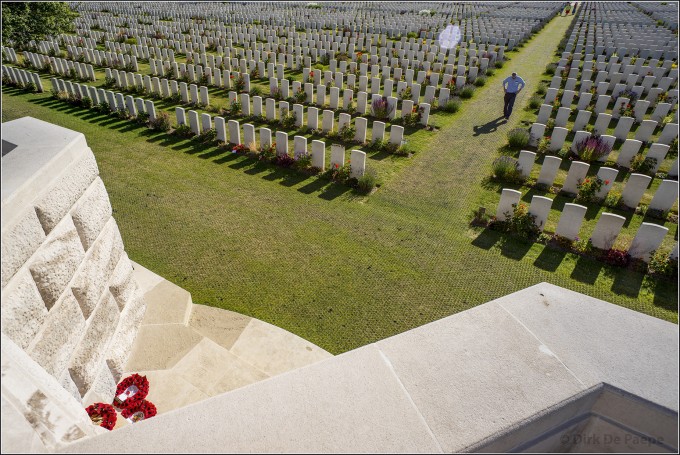
Picture 14: Nobody rests untouched
The Last Post Association
The “Last Post” is a tune of the British regiments, played on clarion, that announces the end of the workday. At the Commonwealth cemeteries, the performance of the Last Post stands for a final farewell to the fallen soldiers.
Out of gratitude for the tremendous efforts of the troops of the British Empire around Ypres, residents of Ypres founded the “Last Post Association”. The Last Post Association in Ypres is therefore a volunteer organization. The association was founded in 1928 and since then it executes the Last Post ceremony every evening at 20:00h, including the performance of the Last Post tune under the Menin Gate, by at least four buglers. The association has eight buglers among its members. Every day, four of them come to play the Last Post under the Menin Gate. They do this in an endless week regime, on and off.
The Last Post Association sets itself as its target to keep this tradition forever preserved and to contribute to anything that can enhance the significance of the tribute. The association also wants to arouse reverence for everything the Menin Gate represents: the sacrifice and suffering, but also the solidarity, the sense of duty and heroism of the soldiers who took part in the battle. Only during the occupation of the city by Nazi forces during World War II, this tradition was interrupted – for obvious reasons. But the very day that the Menin Gate was liberated, the tradition was taken up again, even though at that time some parts of the city were still in Nazi hands.
The buglers of the organization traditionally wear the uniform of the volunteers of the local fire department to which they belong. But the Association itself is separate from the Ypres fire brigade.
In the decades after WW2 the significance of the ceremony was expanded. The performance of the Last Post now commemorates not merely the casualties of the British Commonwealth, but also those Belgian, French and other allies who contributed to the battles at all costs. But also at the “other side”, many soldiers lost their lives. The enemies of yore, are now amongst our best partners and friends in today’s united Europe. Thus the Last Post under the Menin Gate represents not only a look at our past, but also a signal of hope for the future.
Picture 16: Four buglers of The Last Post Association perform The Last Post tune under the Menin Gate in the city of Ypres, Flanders, Belgium
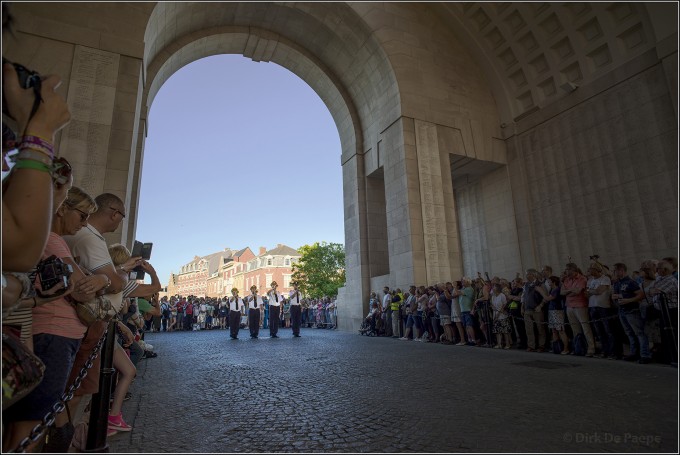
Picture 17: Those volunteers have been playing every single day at 20:00h sharp since 1928, only interrupted by the Nazi occupation of the city during WW2\
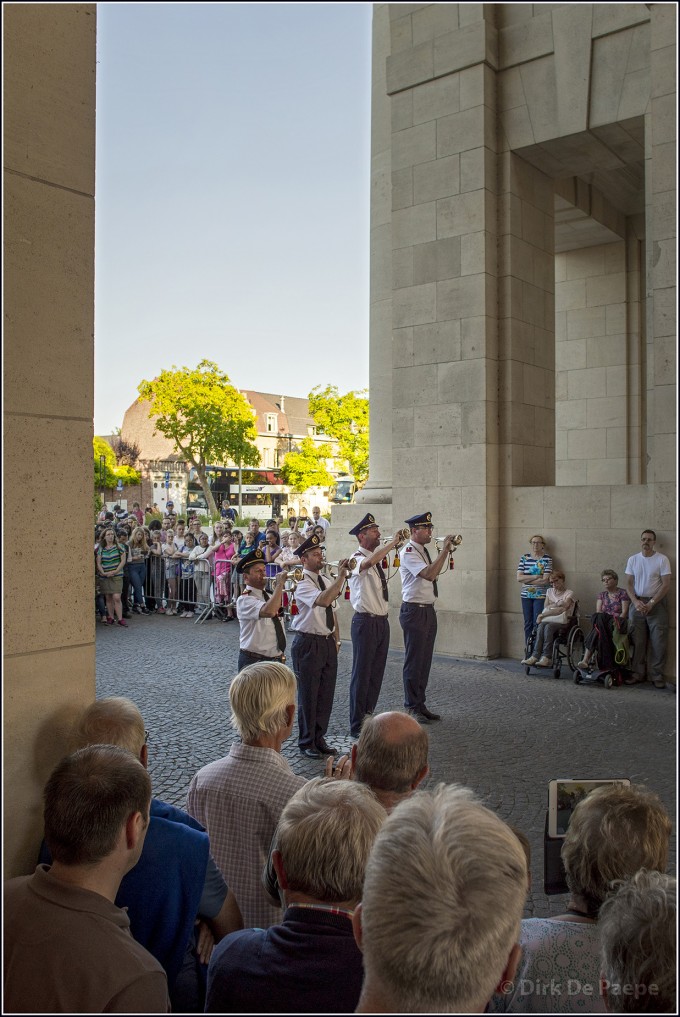
Picture 18: The traffic under the gate is put to halt to allow for this daily event
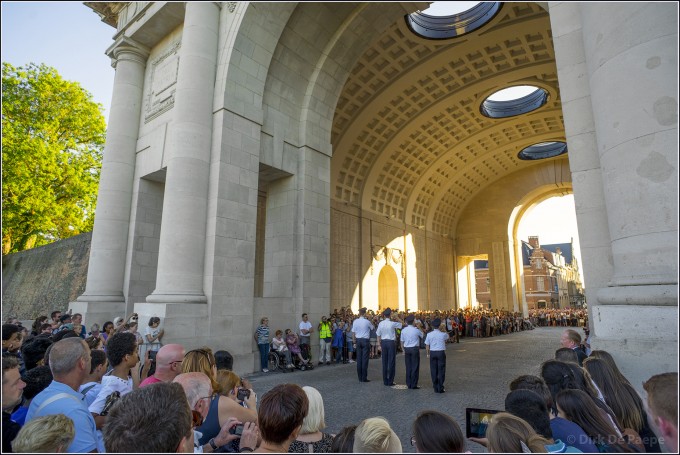
Picture 19: Playing towards the Belfry for the 30001th time, before a daily audience
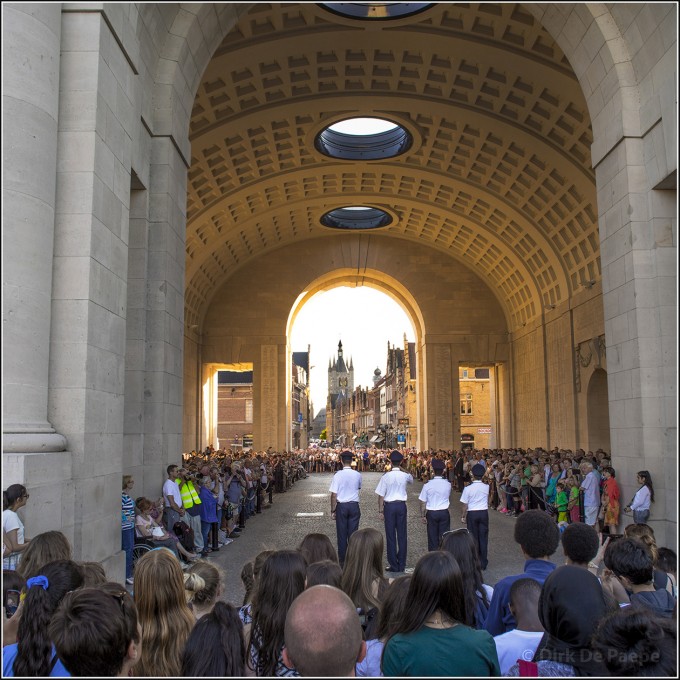
Picture 20: Four common guys with exceptional commitment just played the clarion
The 30001th Last Post
Every day, a little before eight o’clock in the evening, the Ypres police puts the traffic to halt at the Menin Gate. Daily life stands still to return through the Last Post ceremony to 1914-18 and to remember and honor the fallen soldiers. The Menin Gate was specifically chosen for this daily event, because it was here that all the soldiers marched towards the front, many of them never to return.
On July 9, 2015 this performance took place for the 30 thousandth time. To this occasion, a special ceremony was organized, named ”Tribute to the Tribute”, upon which representatives from the at the WW1 Western Front warring countries signed present and laid wreaths under the Menin Gate. Already for many years, I had attending to the Last Post performance under the Menin Gate on my bucket list. And when, on July 9, I heard the radio journal about the solemnity of the 30 thousandth performance, I realized that the right moment had come.
But more than an elaborate ceremony in honor of a special commemoration, I’m more impressed by the fact that this performance takes place on a daily basis since 1928 – every single day, irrespective of temperature or weather, always with (at least) four buglers. Volunteers… There have been chilly winter days in the past, when the buglers were virtually alone and performed the Last Post anyhow, in all modesty. But, with the increased tourism and especially with the larger numbers of British visitors to the Ypres area, today this daily ceremony is attended by many. After the visit of the WW1 museums and cemeteries in the area, people gather in the evening under the Menin Gate, to enjoy the performance of the Last Post with the special acoustics, provided by the building that is so fraught with symbolism. These people of the Last Post Association do an incredible job here, with exceptional commitment, fully aware of the importance to continue this tradition. The lesson we should draw from both world wars and thus the importance of resolving conflicts through respect and tolerance, negotiation and cooperation, absolutely needs to be kept alive. Since 1945, we manage this fairly well, here in Europe. In the countries situated around the battlefields of the Western Front of WW1 and where during so many centuries the population was almost constantly plagued by so many military conflicts, nowadays the peoples work together, aware of the otiosity of war, and they experience an unknown period of already 70 years of mutual peace. More and more countries have joined the European Union, attracted by the success of this project. Often the cooperation is difficult and needs lengthy negotiations to reach an understanding. Sometimes even, for some it may seem as if the cooperation is about to burst, as has been recently in respons to the Greek crisis. But the union always ends up resolving the problems, because all parties agree to continue to negotiate firmly, to continue to cooperate, because everyone realizes that this is the best, indeed the only path to peace and prosperity. We can only hope that this will inspire more and more countries around the world.
Performing The Last Post commemoration literally every day, thàt is the true uniqueness of what happens at the Menin Gate in Ypres. And so I wanted to capture this ceremony – not the one of the 30.000th performance, but the one of the next day, a typical day like the other 29.999. On July 9, I saw the ceremony on TV and I thought the time was right to go to Ypres. So I rearranged my schedule for July 10 and we left after lunch to the Flanders Fields of the former Western Front, where we arrived around 16:30h. In Zonnebeke we visited the Memorial Museum Passchendaele to see the trenches, which are still kept in tact. Tyne Cot is just a stone’s throw from there and was our next stop. At 19:00h we arrived at the Menin Gate in Ypres, where there were already a lot of people gathered, to attend the Last Post performance. The 30001th, on a day like any other.
I hope (some of) my images can tell you something about the subdued and compelling atmosphere that prevails here, at the Menin Gate, but also at Tyne Cot. None of the visitors remains untouched here. Their body language speaks volumes. The symbolism really works.
Picture 21: The British Empire was the largest world power in those days
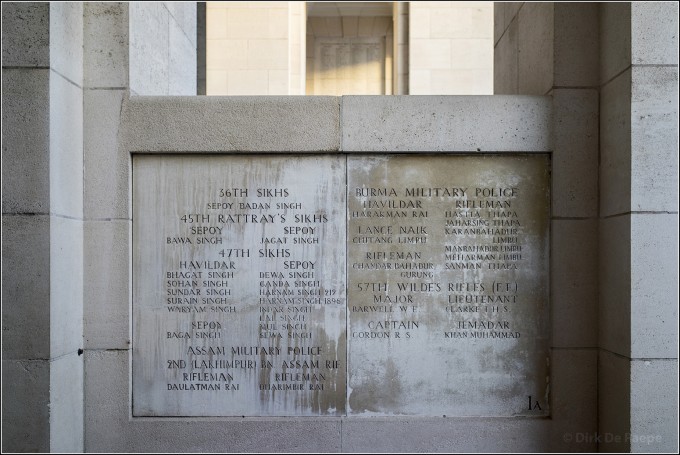
Picture 22: One of the corridors of the Menin Gate
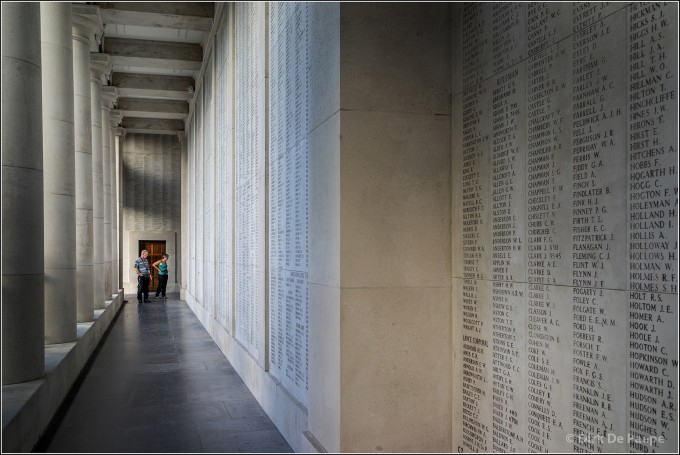
Picture 23: In remembrance of Benjamin Walker, killed in action on September 9, 1915. 100 years ago, Benjamin had only fews days to live. His family was here.
Picture 24: Sharing family feelings
Every day, without exception, and no matter what, four buglers perform the Last Post at 20:00h sharp, in honor of all fallen soldiers of WW1 and to promote peace and cooperation amongst all peoples. Thàt’s the special thing about the Menin Gate in Ypres. Therefore, it was not the special ceremony on July 9 that I wanted to attend. But I wanted to be there on the next day. Because there they were again! Like they were on every single day, since 1928. Four volunteer buglers of the Last Post Association. Along with a lot of people who visited Ypres and its historical sites and concluded their day here under the Menin Gate, to take part in the striking daily remembrance of what took place here one hundred years ago. The photographs in this report are taken on July 10, 2015, in honor of the 30.001th Last Post under the Menin Gate in Ypres. A Last Post like any other Last Post. Like on any other day. Unique.
Picture 25: The Menin Gate, monument for those with no known grave
Epiloge
If you want to know more about the events, just google “Ypres”, “Ypres Salient”, Menin Gate or “Tyne Cot”.
All pictures were shot out of hand with the Sony A7r, most of them with the Canon FD 20mm, some with both the Zeiss Loxia’s. You can find those pics in full size here on my flickr pages (https://www.flickr.com/photos/keepnitgood/sets/72157656745636865), where you can check the lens that was used in the tags.

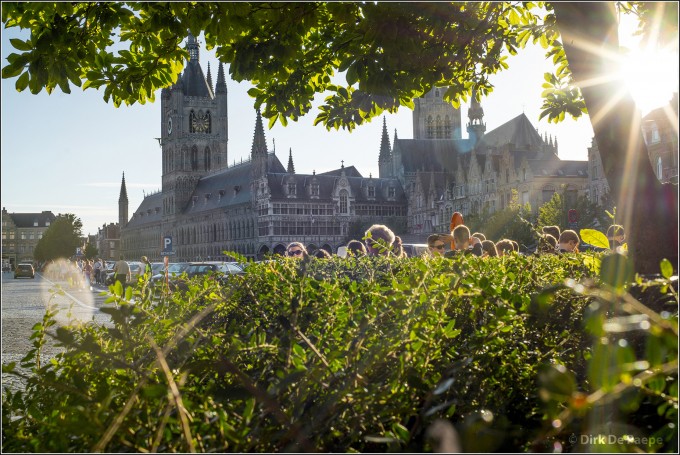
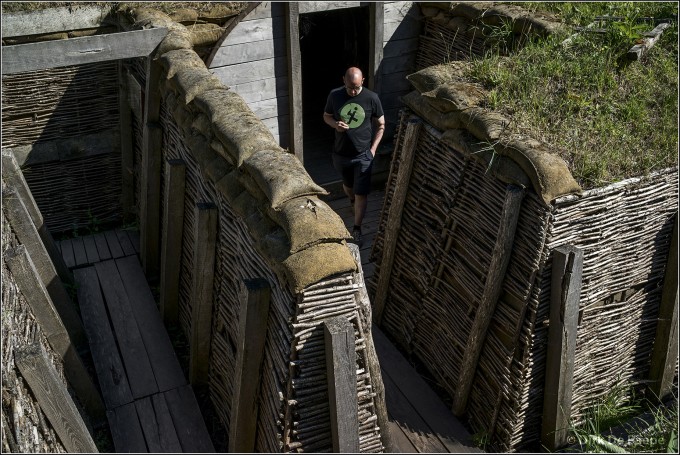
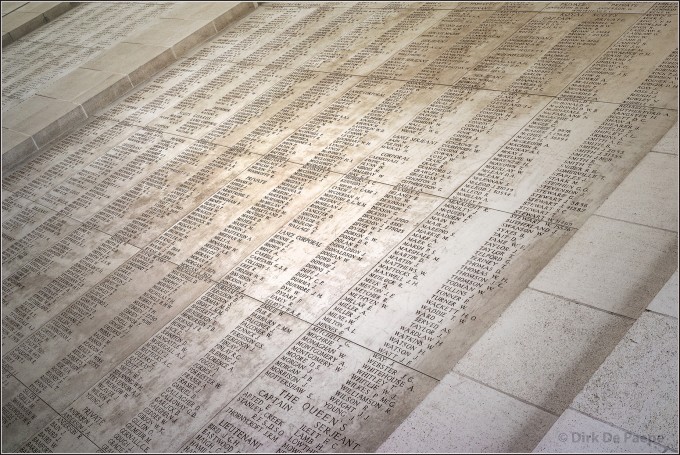
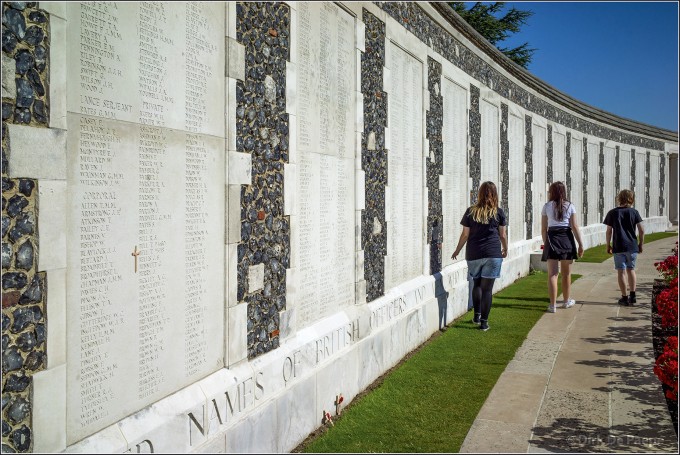
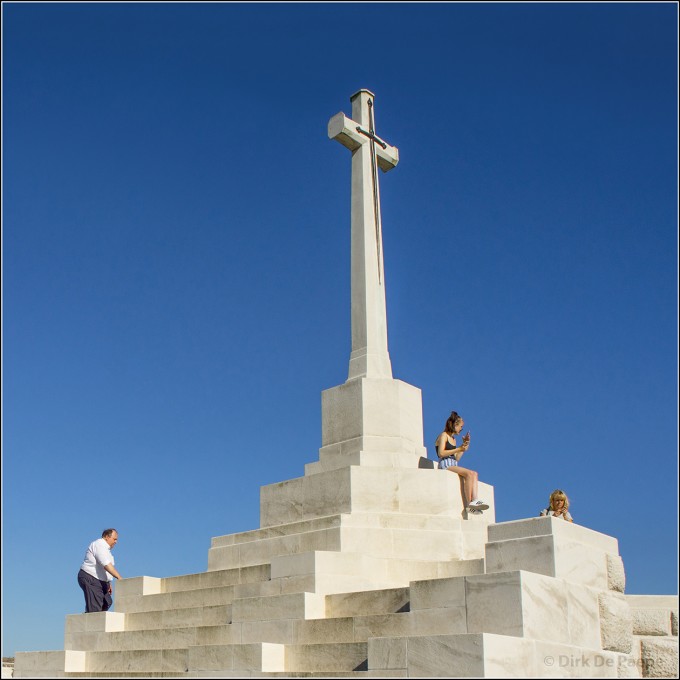
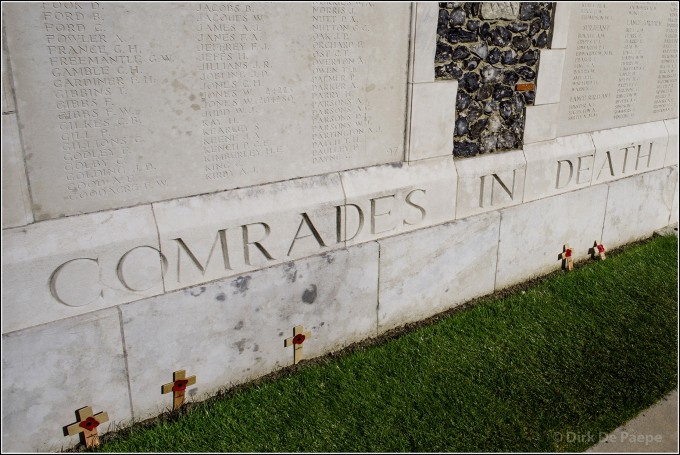
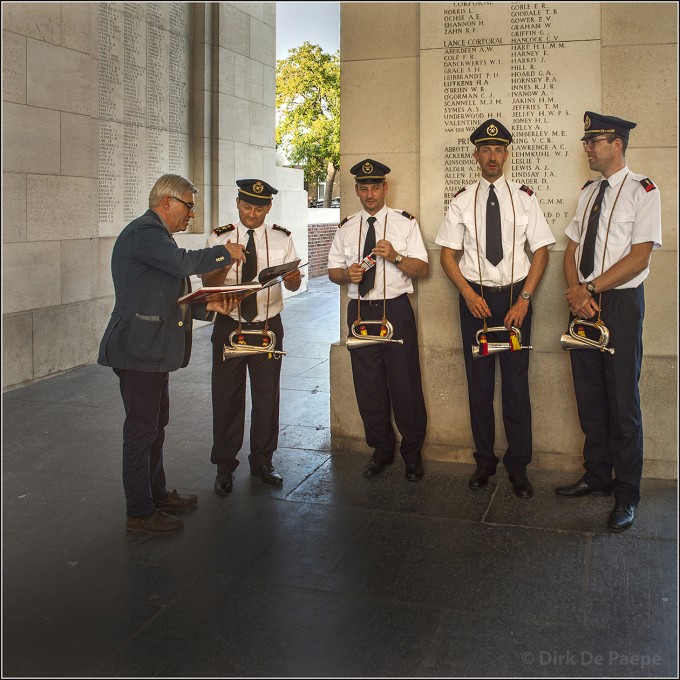
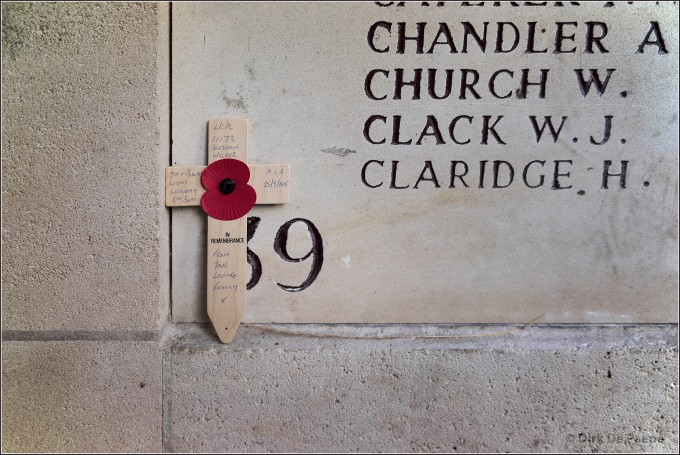
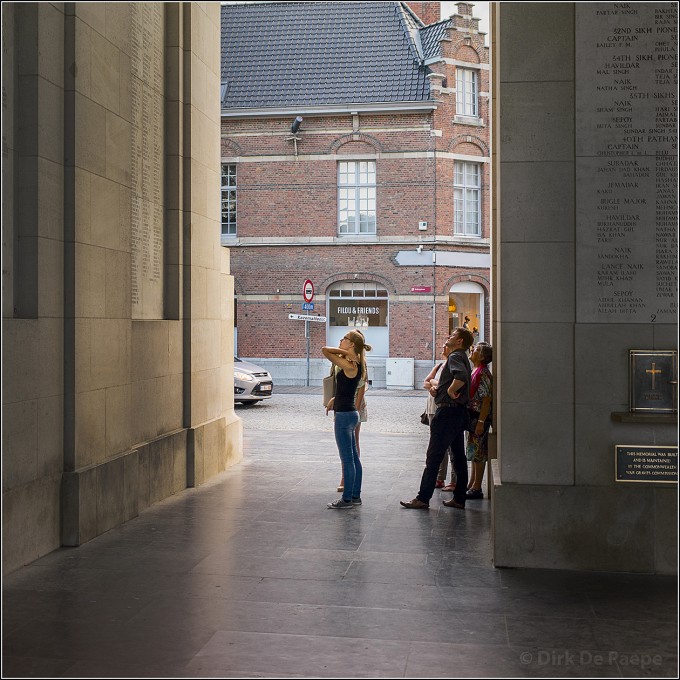




Thank you for sharing this. I really appreciate this article and photos.
Impressive! Well done. Indrukwekkend! Knap gedaan.
Excellent article with some poignant images !
I had been thinking for a long time, when writing this article, to include this wonderful and famous poem of LtCol John McCrae (look at his birth and demise year), but I decided only in the final stage to leave it out. So I’m really very glad that you included it in your post, Richard. It really belongs here. Thank you so much!
In Flanders Fields deserves a spot in your article: https://en.wikipedia.org/wiki/John_McCrae
Another proud Canadian…
It’s one of my favorites. Gives me chills, really. I thought it was perfect with your awesome pics.
In Flanders Fields
By: Lieutenant Colonel John McCrae, MD (1872-1918)
Canadian Army
In Flanders Fields the poppies blow
Between the crosses row on row,
That mark our place; and in the sky
The larks, still bravely singing, fly
Scarce heard amid the guns below.
We are the Dead. Short days ago
We lived, felt dawn, saw sunset glow,
Loved and were loved, and now we lie
In Flanders fields.
Take up our quarrel with the foe:
To you from failing hands we throw
The torch; be yours to hold it high.
If ye break faith with us who die
We shall not sleep, though poppies grow
In Flanders fields.
Great post, Dirk! I live in the Ypres region myself. I have contributed to Steve Huff’s blog myself a couple of times, and I had plans to do exactly what you did, but with film (I thought the Ilford Delta 3200 Pro would be wonderful under the Menin Gate).
In September of 2015, my wife’s oboe ensemble had the honour to play at the Last Post event. They asked me to film and of course I gladly obliged. I used the GH3 with the Lumix 12-35mm f2.8 lens. Here is the result: https://vimeo.com/139052137
Your film really brings me back under the Menin Gate, Ivan. Thank you so much for posting it. I hope everybody will look at it.
To Steve, Brandon and all who read this article and specially all who replied to it.
Firstly, I thank Steve for publishing. This really means a lot to me, having put in quite a bit of work. But like so many others, I like publishing, because it’s arguably the most powerful way of communication. Steve and Brandon give many the opportunity to do so. We can’t thank them enough for it! I’m not posting that much articles to them – that’s because I really take quite a bit time to prepare them – still there are yet a few new subjects bubbling in my head. So there will be a few more to come, I guess. 🙂 I surely hope they will be appreciated as well…
About the comments: thank you so much, guys, this was really everything I hoped for, and more.
The presence of those sites (of both world wars) in our country, what we learned about it in school and of course the stories that my parents and relatives told me about WW1 (I had a grandfather who fought in the trenches) have always been with me. This history is the source of the idea that only cooperation and bonding can generate peace. Of course the European Union isn’t perfect. It is and will always be a work in progress. It was far from my intention to make this a political article. But still I wanted to state that the fact that the countries of the union, since their accession, have been in mutual peace for more than 70 years now, is really unique in the world’s history, especially since there are so many peoples involved, with so many different languages (Germanic, Romanesque and Slavic, to name only three groups), so many cultural backgrounds, so many religions, whereas in the past there has been wars “all the time” in Europe. We can only thank the Union for it. It’s the cradle of dialogue and cooperation, mutual respect and understanding. But it often comes with a lot of effort, patience, perseverance and even sacrifice. And sometimes, one can think that his country is better off on its own, usually merely seen from an economical point of view. And indeed it can seem so. But leaving the union blows up the close bondage and will change a pattern of cooperation into one of competition, which is the breeding ground for conflict and war. And for sure, nobody wins then – the costs of war will always vastly go beyond the costs of cooperation and solidarity. I wanted to stand up for the idea that war is never a solution, without adding to this a political or (for that matter) religious standpoint. Those are really subordinate in this, IMO. As long as nobody thinks that his thoughts, his opinions, etc. are the only truth and nobody wants to impose his opinion to the others, cooperation and bonding is possible. As long as there is respect, tolerance and continuous communication. Those lead to trust. And trust leads to peace. Ending the bonding generates an opposite force, towards competition, mistrust and ultimately war. History has proven this over and over in the past and it still does in the present. I can only hope all European countries will be wise enough not to choose the wrong direction. But I firmly believe that, even if one country would leave, there still will be a union. It would be a loss for the Union indeed to see one leave, but a much greater loss for that particular country, even if at first it may look like a win. The people who are aware of history know that all too well. Initiatives like the Last Post Association are working hard to keep that awareness alive. That’s why they deserve all the credit. That’s why I wrote this article.
Appreciate the wish to not politicise the page, but Europe is presently under demographic attack with the very lack of border control greatly contributing to an increasingly dangerous situation. EU or no, some member states are having to go their own way to defend themselves from invasion by re-instituting border controls with physical barriers. And citizens with governments intent on national “suicide” are increasing taking defence into their own hands. The EU experiment is not leading to peace. As for the EU keeping the peace post-war, the Cold War and the US/NATO defence of Europe saw to that, not the EU.
Dear James, this really isn’t the right platform to discuss political matters. Let me just tell you that I don’t agree with you. As strong I feel the urge to reply to and refuge your arguments, I’m not gonna do this, because I want this to stop here. We both have the right to our opinion. You living in Australia and me in the heart of Europe also is a breeding ground for different opinions. I only hope that people don’t forget history, because it shows us the right direction about many things.
(I wrote a more elaborate reply earlier, which I hope Steve will not publish. Thanks for that, Steve!)
James, I totally agree with your points. Germany is in the process of committing cultural suicide. Unfortunately, the citizens will be forced to handle it with rakes and shovels. Merkel can’t expect the good people of Germany to sit by while she gives away the country. It will get ugly.
Straight from life (and death) a marvellous tribute of remembrance in words and pictures: it will go into my archive.
Thank you very much for a great article, as unexpected as it was! I think sometimes this site is really like a magazine. 🙂
I think that in order to prevent future wars, we must absolutely remember the previous ones, and honour those who put their lives, their bodies, their sanity on the line for us. Yes, many lives were wasted in the most amazingly stupid ways, but we cannot be pro-peace in any meaningful way unless we solemnly honour the dead (on all sides).
I will disagree with you on the idea that a united Europe is a good thing. I think it is an utter disaster, despite the good intentions. But, I respect other people’s views, as we cannot have a meaningful civilisation without free speech. 🙂
Agree with you there, Karim. The illusory and contrived “unity” now becomes the very cause of enormous discontent with the “one size fits all” contributing to disunity. Being led down a pathway to disaster by some slack states is already evident; the UK is waking up and will surely leave next year.
Thanks for your reply, Karim (and James). Please read my general comment below.
Well remembered, written and illustrated, Dirk.
This place still has so many strong memories 100 years on for so many people in numerous countries.
In Australia, every city and even the very smallest towns have their war memorials which in the absence of buried remains became the “cemeteries” of the fallen for so many families who could never travel to far off Belgium, France or Turkey to visit where their sons or brothers lie.
Australia had a small population at the time and suffered the highest casualty rate per capita of the Allies. As a child I remember many older women who had never married after WW1 because their fiances and friends never returned and the remaining “pool” was small.
Several miles away is my tiny “town” with its tidy granite memorial on a hill; among others, a soldier who died at Polygon Wood near Ypres is there remembered, as he is at Menin Gate.
No ANZAC Day and Remembrance Day passes without observance. And the Belgians are to be thanked for their wonderful daily observance at Ypres.
Your reply really moved me, James. Thank you so much!
Indeed, many Australian soldiers fought and died near Ypres. The engravements on the Menin Gate and the walls of Tine Cot are a clear testimony of it.
Thank you for this wonderful post, Dirk. Your phenomenal photographic and writing skills are indeed a revelation — understated yet possessed of a sledgehammer effect. I live in faraway India and will never be able to visit Ypres, but now I can always visit your post whenever the senselessness and utter futility of war on our tiny planet threatens to overwhelm me. I hope those at the helm of affairs of pathetically aggressive nations of the world get to see your report.
Thanks for you reply, Subroto. I really appreciate it. There were soldiers from India as well that gave their live in the Ypres Salient.
Great story and photos. I visited here 23 years ago and did a day tour of some of battlefield sites. Without doubt the highlight of my trip to Europe. A very moving experience seeing all the graves.
This is fine example of great dynamic range, thanks for sharing!
Thanks for sharing….
The images are a great tribute to the fallen. I am old enough to have known soldiers who fought in WWI one still suffered the after effects of a gas attack. This is fine tribute. Thank you.
Very informative post. Thank you for the effort to put it together.
Sadly the world hasn’t advanced much since “the war to end all wars”. We’re just now more efficient at killing people today 🙁
Thank you for sharing Dirk, your words with pictures really moved me.
Great pictures. Looking at the exif data on Twitter, half of the pictures were shot with the loxia biogon 35mm while only one picture was shot with the planar 50mm
Abe, what camera or lens was used for this shoot doesn’t really matter, it was the moving post that was the real point. Thank you Dirk for a wonderfully moving post.
Informative and moving presentation.
This is a wonderful post with great writing and great images. Thank you! I’ve always wanted to visit World War I battlefields; perhaps in the next few years. Ten years ago I visited the Normandy beaches of D-Day and I was just overwhelmed.
Thank you again for this important post.
This is an excellent write up and picture tutorial. Thank’s very much for sharing it with us.